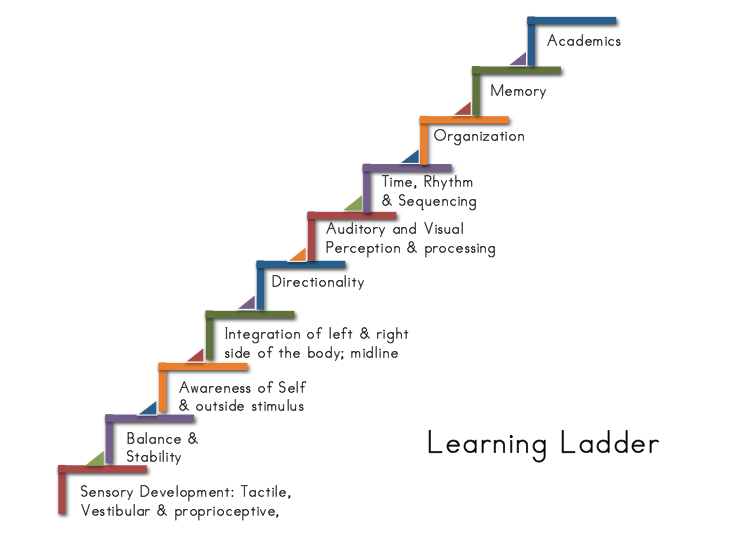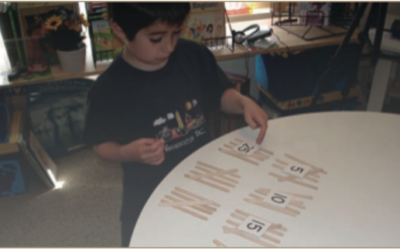Addressing learning issues on the academic level is like repairing a roof when the walls and foundations are cracked and crumbling. The above diagram, The Learning Ladder (de Garcia, 2014), illustrates what systems need to be in place, and in what order, so that they are able to appropriately support academic learning, located at the top of the ladder, as seen in a previous post.
When we look at babies, we see that they do not yet have the neural connections into the frontal lobes of their brain to control their impulses. It is normal, at this age, for babies to be hyperactive because certain parts of the brain, the basal ganglia in particular, have not yet been developed and are not connected to other levels of the brain (Blomberg & Dempsey, 2011). Children who hop, spin and crash into walls while walking are still learning to control their balance. They are demonstrating that they too have underdeveloped brains and are developmentally similar in some ways to the active infant.
What these children are silently telling us is that somewhere along the line, they have missed some critical developmental stages, because the brain does not develop normally if a stage of development is missed (Gold, 2008). When analyzing the behaviors of poor readers, the problems that had been identified all boiled down to an unorganized nervous system (Gold, 2008). Eye dominance is one result of this organization. Studies have showed that as much as 81% of students who have learning difficulties are left-eyed and right handed. “Since the eye naturally wants to track from the right to left, it will also guide the hand from the right to left, which may cause writing difficulties or letter reversals” (Hannaford, 1995, p. 211).
–From my book: Movement Makes Math Meaningful: Away from the Desk Math Lessons Aligned with the Common Core, pages 12-13
Check out my post on A Paradigm Shift in the Educational System for Support of our Struggling Learners to see what is needed in schools to truly address brain development issues of children.





0 Comments